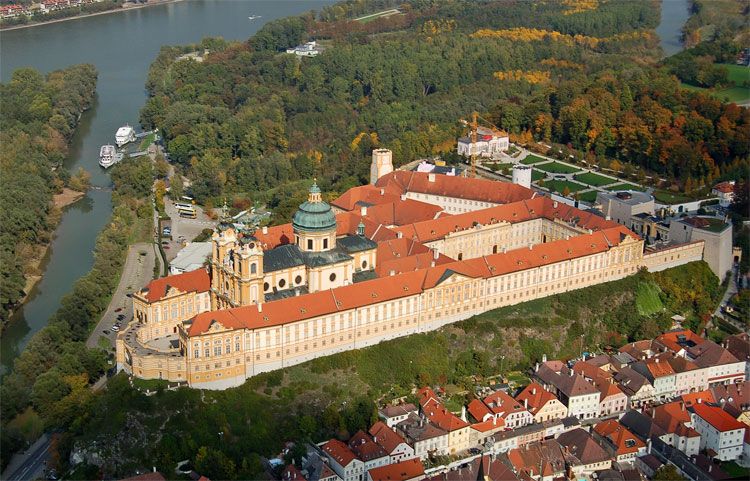
Through A Glass Lightly: Passauer Glasmuseum
On a recent trip from Passau, Germany to Budapest, Hungary last month on a Viking River Christmas Markets cruise, I had the privilege of partaking in some truly exceptional experiences. But with all the great food, wine and Christmas Markets experience, two places stuck in my memory, mainly because they were unexpected, I knew little or nothing about them, and found each fascinating. One was on the itinerary, one wasn't.

Passauer Glasmuseum (Glass Museum Passau) was not on the itinerary, probably because it may have been a little too esoteric for the Christmas Markets passengers. I went because I was following two avid glass collectors who were also Viking Cruise passengers, and I was interested in all aspects of art deco, art nouveau, and how the culture of glass in Germany evolved.
The museum sits inside the Hotel Wilde Mann in one of the city squares in Passau. It is home to the world’s largest collection of European glass. Over 30,000 exhibits provide a comprehensive overview of the various periods of glass art from Baroque, Rococo, Empire, Biedermeier, Art Nouveau and Art Deco. The focus is on the heyday of Bohemian, Silesian, German and Viennese glassmaking from the 19th century to the early 20th.

When learning about the Biedermeier period in Germany and its glass art, you'll learn that it actually does not refer to the era of time as a whole, but to a particular mood and set of trends that grew out of the unique underpinnings of the time in central Europe. There were two dimensions for the development of the period and the first focused on growing urbanization and industrialization leading to a new urban middle class. This created a new audience and new buyers for the arts, and the emphasis on home life meant a blossoming of furniture design that included glasswork.

Loetz was the premier Bohemian art glass manufacturer during the Art Nouveau period (or Jugendstil, as it was called in German-speaking countries) from roughly 1890 to 1920. Founded in 1840 by Johann Loetz in what is now the Czech Republic, the company became known for its innovative techniques, organic forms, and bold use of color and classic vase forms.
Another series from the turn-of-the-century was known as Streifen und Flecken (stripes and spots), whose cheerful shapes and colors seem friendly and happy.

The Benedictine Monastery At Melk, Germany
The Benedictine Monastery At Melk, Germany was on the Viking Christmas Markets cruise itinerary, which was good, as I had never seen this Monastery. I had heard of it, because of its reputation for Apricot Liqueur, and that Umberto Eco wrote The Name Of The Rose in the Monastery Library. Also, I had recently read a book, The Swerve: How The World Became Modern by Stephen Greenblatt, about the importance of Scriptoria in monasteries, as they were places where Greek and Roman classics were translated into Latin and German by roving scribes or Monks who lived at the Monastery. If I had lived in those times, I think I would have been one of those scribes, so it was great to experience an actual Monastic library where a Scriptorium was attached.

Melk Abbey is a famous monastic site located on a rocky outcropping above the town of its namesake, overlooking the Danube. The abbey was originally a palace, and still has a royal glow with its deep yellow coloring. The high altar and the cupola in the church are lighted by natural light only, and the transept in the church has the sarcophagus of St. Coloman, Patron Saint of Austria.

The abbey was founded in 1089 when Leopold II gave one of his castles to the Benedictine monks. A monastic school was founded in the 12th century, and the monastic library soon became renowned for its extensive manuscript collection. The library raises two floors, has twelve rooms, with around 100,000 volumes of manuscripts, many being written before the 15th century. In addition to being in this library and breathing in its history, patrons discovered the significance of the white urn on the altar of the abbey which holds the ashes of Saint Coloman of Stockerau.

Saint Coloman was an Irish pilgrim who was martyred in Austria while on the way to the Holy Land. Tortured and hanged as a spy, his body afterwards (according to local stories) did not decompose. It remained preserved, and miracles were reported at his grave. The Austrians then realized that Coloman was a holy man, put to death by mistake. He became the patron saint of Austria.
The Baroque abbey was built between 1702 and 1736, and we stood on the terrace of the Abbey, where I took pictures of the town. That same spot is said to have been used as a lookout by Napoleon when he used Melk as his headquarters in his campaign against Austria.

During the time we spent exploring, the collectors allowed me to understand, to a greater extent, the beauty, the meaning and sometimes the fussiness of glass collecting and the history behind The Benedictine Monastery at Melk. Both excursions proved worthwhile, and come highly suggested when traveling in Germany.










